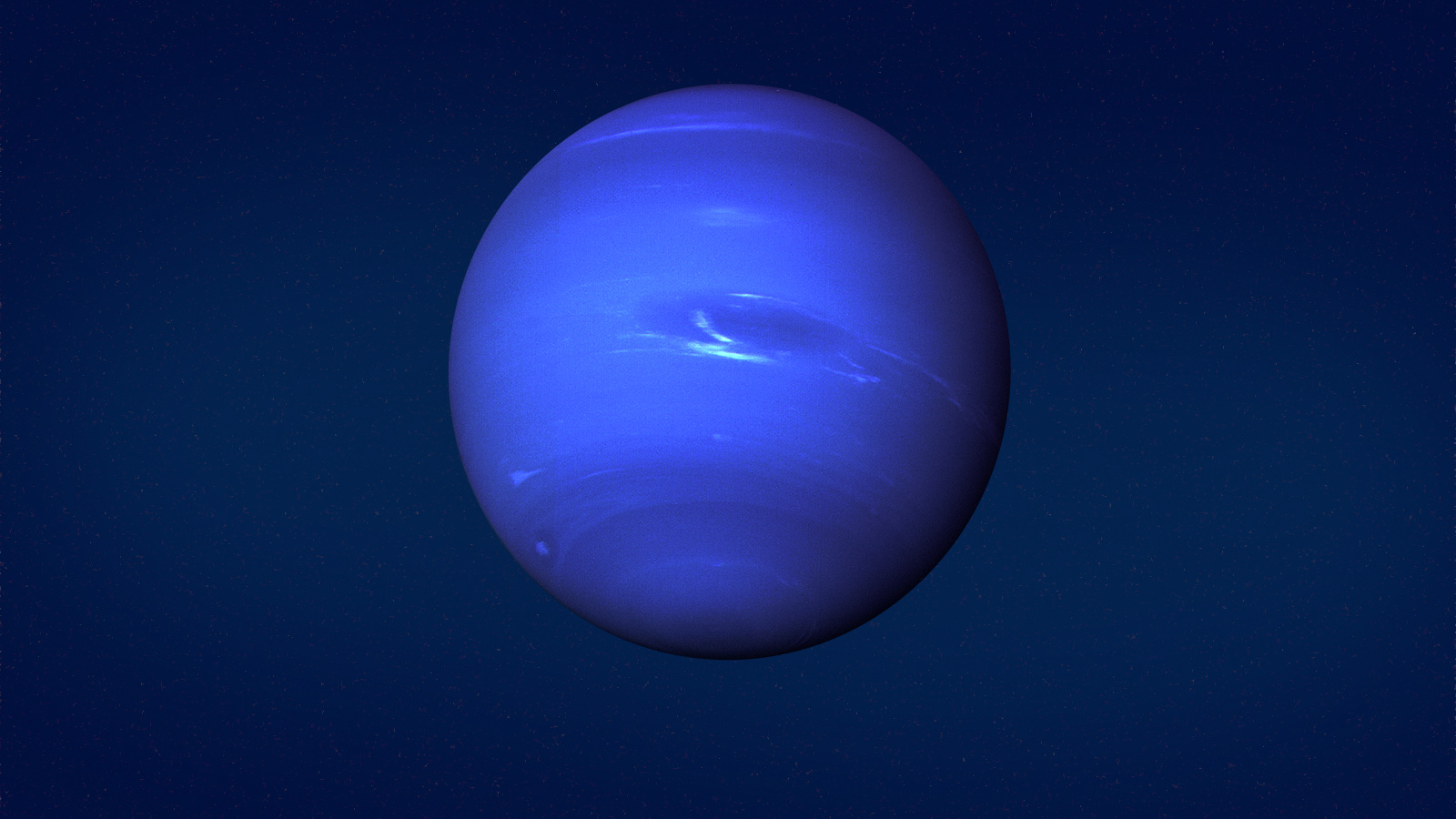Have you ever stopped to think about the vastness of our solar system, and how some distant worlds just keep moving, almost silently, across the cosmic stage? It’s a pretty amazing thought, isn't it? We live on Earth, a rather small world in the grand scheme of things, and yet, there are these giant planets out there, so far away, yet constantly on the move. Today, we're going to talk a bit about Neptune, a truly mysterious and distant neighbor, and what its journey, or "neptune transit," really means for us curious observers back here.
You see, Neptune, that eighth planet from the sun, is quite a traveler. It takes an incredibly long time for it to complete just one full trip around our star, a journey that spans over a century and a half. This extended voyage, its very long orbit, is what we might think of as its transit – its slow, steady passage through the heavens. It's a planet of extremes, really, a place of deep cold and powerful winds, yet it holds a certain quiet beauty.
So, as we look up at the night sky, even though Neptune itself is too far to see without help, knowing about its constant, sweeping movement gives us a sense of its presence. It's a reminder of how much there is to discover, and how every planet, even the most remote, plays its part in the great cosmic dance. This idea of a "neptune transit" truly helps us appreciate the scale of our solar system, and just how much these celestial bodies are always, always in motion.
Table of Contents
- Neptune's Grand Orbit: A Journey Through Time
- The Blue Giant Up Close: What We Know About Neptune
- How We Found Neptune: A Triumph of Calculation
- Why Neptune Matters: Its Place in Our Solar System
- Frequently Asked Questions About Neptune
- Looking Ahead with Neptune: Continuing the Exploration
Neptune's Grand Orbit: A Journey Through Time
When we talk about a "neptune transit," we are really talking about its incredibly long journey around the sun. This distant world, you know, makes a complete circle around our star only once every 164.8 years. That's a very, very long time by human standards, isn't it? Imagine a human lifetime, and Neptune would barely have completed one of its own years. This extended orbital period really sets it apart from the closer planets.
Its path through space is also quite wide. Neptune orbits the sun at a distance of about 30.1 astronomical units, which is a pretty huge number. To put that into perspective, that's roughly 4.5 billion kilometers away from the sun. It is that incredible distance that makes its "transit" or its movement seem so slow from our vantage point here on Earth. It's more than 30 times as far from the sun as our own planet is, which, you know, is quite a stretch.
Because of this great distance, Neptune is, in fact, the eighth, and most distant planet from the sun in our solar system. It is also the outermost planet, just sitting on the inside edge of the Kuiper Belt. This area is a large, rocky region of the solar system, and Neptune's position there makes it a kind of gatekeeper to the outer reaches. Its long journey, its very own "neptune transit," happens way out there, far from the sun's direct warmth.
The Blue Giant Up Close: What We Know About Neptune
Neptune is often called an "ice giant," and for good reason. It's known for its striking color, which is a beautiful deep blue, and for its incredibly powerful winds. In fact, Neptune has the most powerful wind speeds out of all the planets in our solar system. These winds can be supersonic, whipping across its surface, making it a very, very dynamic place. It is also quite dark and cold, as you might expect, being so far from the sun.
Even though it's an ice giant, Neptune is actually the smallest of the gas giants, which is kind of interesting. It is also the fourth largest planet in our solar system overall, and the third most massive planet. So, it's a big world, but it's got a unique composition compared to the other gas giants. This combination of size, composition, and extreme weather truly makes Neptune a fascinating place to study, even from afar.
The planet is named after the Roman god of the sea, which, you know, feels very fitting given its deep blue appearance. It is a planet of mystery, and because of its great distance from Earth, it cannot be seen with the unaided eye. You really need some powerful telescopes to catch even a glimpse of it. This makes any kind of "neptune transit" observation a task for advanced equipment, rather than a simple stargazing activity.
How We Found Neptune: A Triumph of Calculation
The story of Neptune's discovery is actually quite remarkable. It was the first planet discovered through mathematical calculations, which is pretty amazing when you think about it. Scientists noticed that Uranus, another distant planet, wasn't quite moving as expected in its orbit. They figured there must be another, unseen planet pulling on it, influencing its path. So, they did the math, and that led them to Neptune.
While its official discovery did not take place until the 19th century, there are indications that it was observed before that, though perhaps not recognized as a planet. For instance, Galileo Galilei, the famous astronomer, made some drawings from December that show what could very well be Neptune. He spotted the object, but it's believed he might have mistaken it for a star because of its slow movement and distant position. So, in a way, its "transit" was observed, but its true identity was a bit of a secret for a while.
This method of discovery, using pure mathematics to find a celestial body, was a huge step forward in astronomy. It showed the incredible predictive power of science and calculation. It's a good reminder that sometimes, the biggest discoveries come from careful observation and clever thinking, even before you can actually see the thing you are looking for. The idea that a distant "neptune transit" could be predicted simply by numbers is, you know, quite profound.
Why Neptune Matters: Its Place in Our Solar System
Neptune, as the outermost known planet, holds a very special place in our solar system. It helps define the boundaries of our planetary neighborhood, acting as a kind of sentinel for the vast spaces beyond. Its presence helps us understand the overall structure of our solar system, and how the different planets interact with each other. It's a key piece of the puzzle, really, for understanding the bigger picture of our cosmic home.
There is also a theory that Neptune may have formed much closer to the sun in the early solar system history, before migrating to its current distant position. This idea is a bit mind-bending, isn't it? It suggests that the planets weren't always where they are now, and that there was a lot of movement and rearrangement early on. This concept of planetary migration, and Neptune's potential role in it, is a very active area of study for scientists.
Studying Neptune, even from afar, gives us valuable clues about the formation and evolution of other ice giants, both in our own solar system and perhaps even beyond. Its unique characteristics, like its powerful winds and its cold, dark nature, offer insights into extreme planetary environments. So, its continuous "neptune transit" around the sun is not just a simple orbital path; it's a journey that carries with it many secrets about the origins of planets.
Frequently Asked Questions About Neptune
Q1: How far is Neptune from the sun?
Neptune orbits the sun at an average distance of about 30.1 astronomical units, which is roughly 4.5 billion kilometers. That's more than 30 times as far from the sun as Earth is, making it a very, very distant world. Its journey is truly a long one.
Q2: When was Neptune discovered?
Neptune was officially discovered in the 19th century, through mathematical calculations that predicted its existence. However, there are earlier recorded observations, like those by Galileo Galilei, who spotted it but did not recognize it as a planet, so it's almost like it was seen but not known for a while.
Q3: What is Neptune known for?
Neptune is known for being the eighth and most distant planet from the sun, an ice giant with a striking blue color. It's also famous for having the most powerful wind speeds out of all the planets, and it's the only planet in our solar system not visible to the unaided eye, which is quite something.
Looking Ahead with Neptune: Continuing the Exploration
As we continue to gaze at the stars and learn more about our cosmic neighborhood, Neptune remains a planet of immense interest. Its long "neptune transit" through the outer solar system is a constant reminder of the incredible scale and wonder of space. We've learned so much about it from afar, and every new piece of information helps us build a more complete picture of this distant, blue world. You can learn more about Neptune on NASA's website, which is a great place to start.
Thinking about Neptune's journey, its very long orbit, makes us appreciate the amazing movements happening all around us, even if we can't see them directly. It encourages us to keep looking up, to keep asking questions, and to keep exploring the vast universe we live in. We are always finding out new things about these distant worlds, and there is so much more to uncover about the solar system's outermost planet. You can learn more about our site, and link to this page for more insights into planetary science.
So, the next time you think about the planets, take a moment to consider Neptune, silently making its way around the sun. It's a testament to the enduring mysteries of space, and a constant invitation for us to keep learning and wondering. Its "neptune transit" is a symbol of the universe's endless motion and its many, many hidden wonders, just waiting for us to discover them.
_flatten_crop.jpg)


Detail Author:
- Name : Brayan Macejkovic
- Username : hudson.brendon
- Email : proob@gmail.com
- Birthdate : 2004-04-26
- Address : 365 Konopelski Greens Apt. 353 West Dortha, VT 57930
- Phone : +1-719-535-6507
- Company : Bernier-Zboncak
- Job : Personal Care Worker
- Bio : Maiores totam est omnis ipsa natus accusantium. Sed aut eaque velit est nihil doloribus. A unde aut neque dolorem voluptatem.
Socials
instagram:
- url : https://instagram.com/mcglynnj
- username : mcglynnj
- bio : Voluptatem sequi fugiat quis explicabo ab tempora sunt. Et omnis odio iste tenetur.
- followers : 4788
- following : 2733
twitter:
- url : https://twitter.com/jmcglynn
- username : jmcglynn
- bio : Delectus laboriosam eaque aut minus quo similique occaecati officia. Dolor quo omnis sint et veniam reiciendis doloremque. Quidem a ea esse et.
- followers : 2247
- following : 987
facebook:
- url : https://facebook.com/jennie_dev
- username : jennie_dev
- bio : Ut eius soluta soluta. Dolorem et tempora non voluptatem ducimus qui aut.
- followers : 2645
- following : 2739